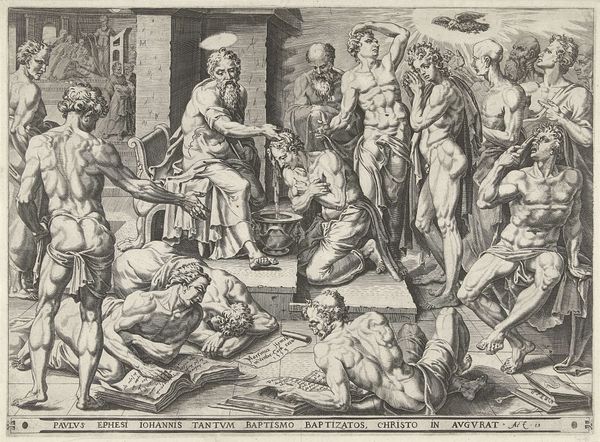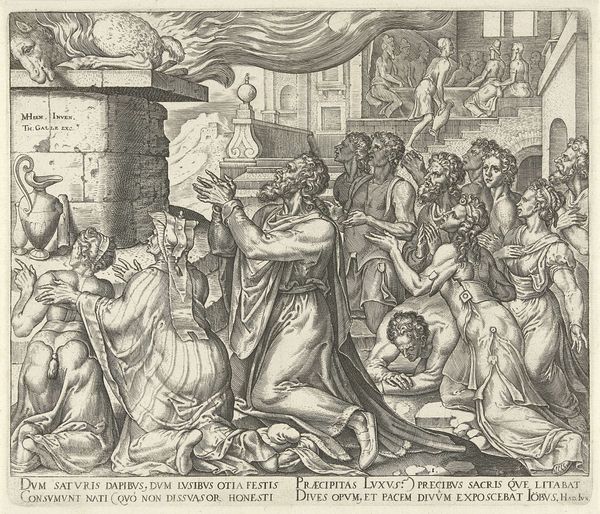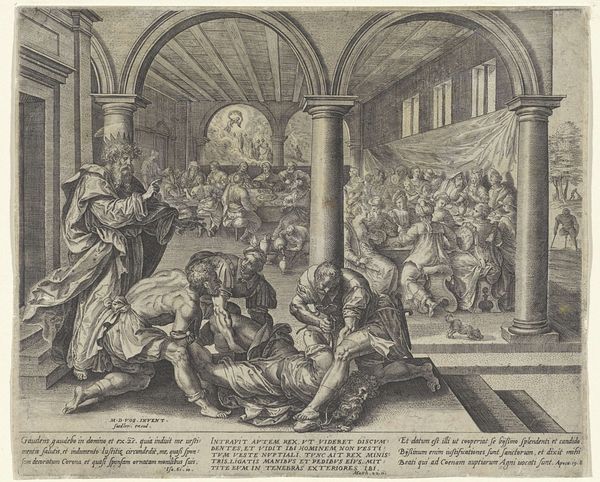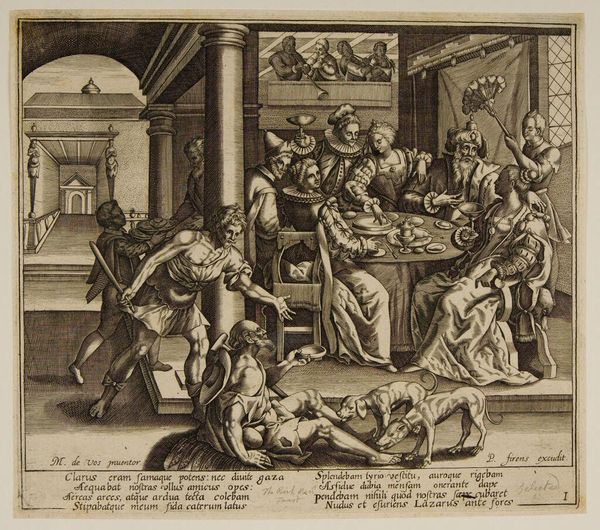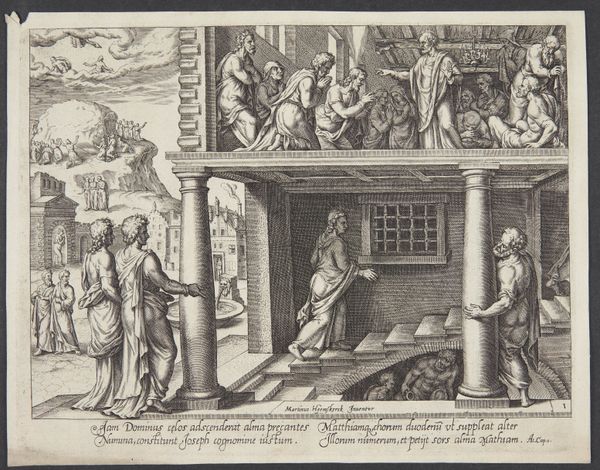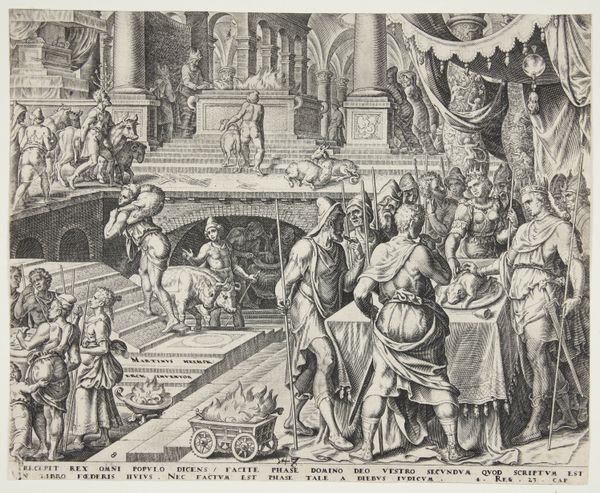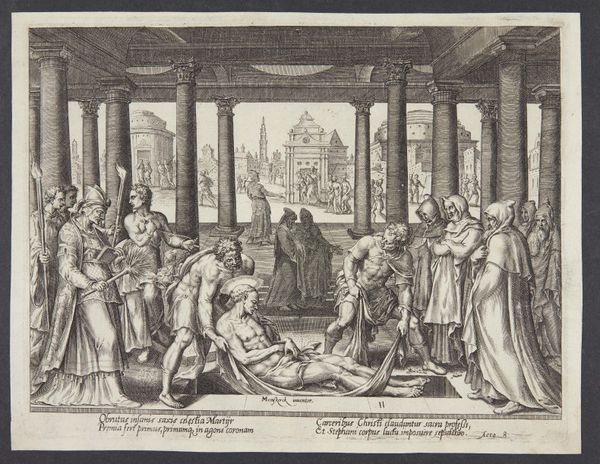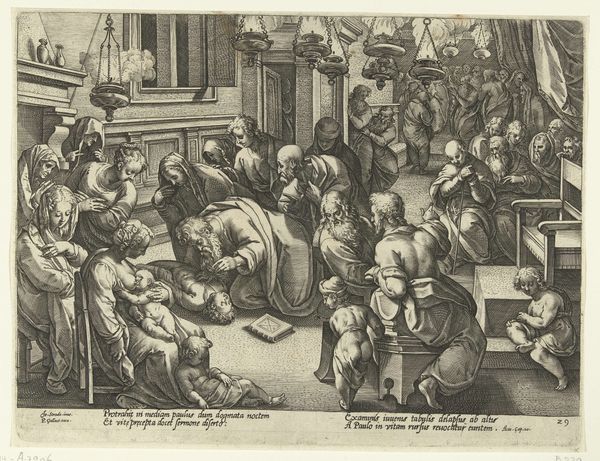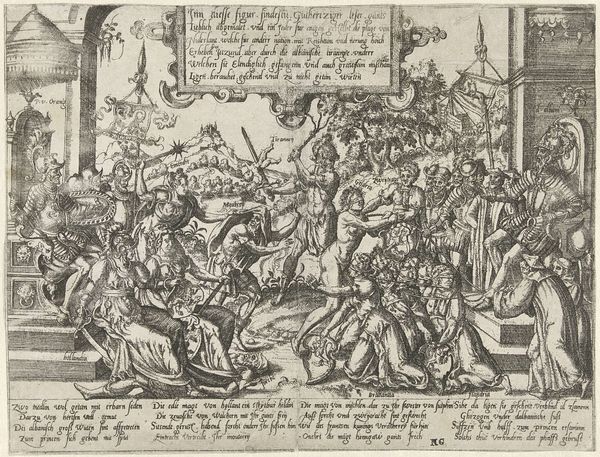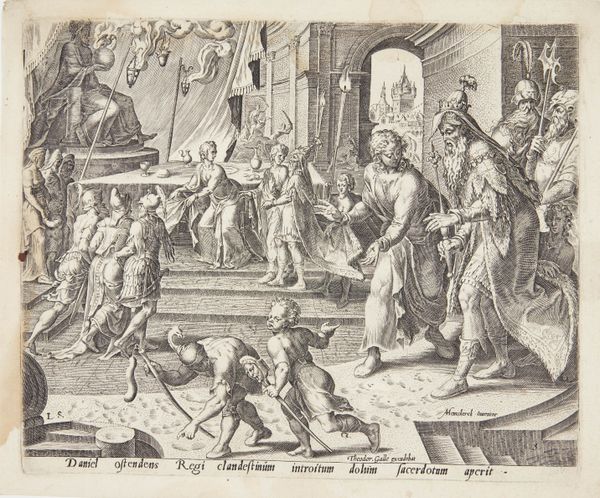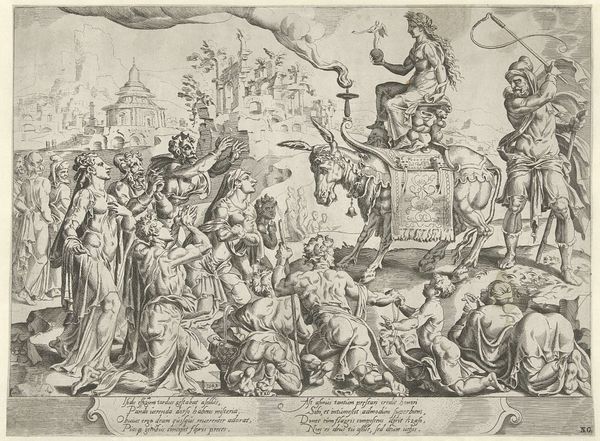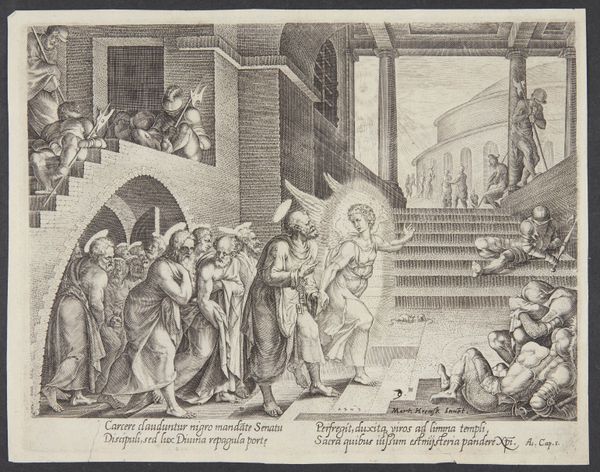
print, etching, intaglio, engraving
#
narrative-art
# print
#
etching
#
intaglio
#
mannerism
#
figuration
#
history-painting
#
engraving
#
miniature
Dimensions: 212 mm (height) x 275 mm (width) (plademaal)
Editor: So, this intricate engraving, "The Apostles Baptizing in Jerusalem" by Philips Galle, made in 1575, is teeming with figures. I am immediately struck by the architectural setting; it feels theatrical. What socio-political factors do you see at play influencing the creation and reception of an image like this? Curator: That’s a keen observation. This print exemplifies Mannerism, which flourished in a time of religious and political upheaval. The crowded composition, elongated figures, and dramatic lighting weren't just stylistic choices; they actively communicated and reinforced specific theological positions circulating around baptism during the Counter-Reformation. Galle's detailed work was intended for broad distribution; what kind of impact might this type of print have on the perception and understanding of religious doctrine in the 16th century? Editor: Well, the widespread availability meant more people had access to visual interpretations of scripture. It strikes me that these prints reinforced specific teachings and created a shared visual culture amongst the masses. Was there an effort to control the narrative around biblical events through prints like this? Curator: Absolutely. The Church recognized the power of images to shape public opinion. Prints like these functioned as propaganda tools, subtly guiding interpretations of religious events and solidifying Church authority in the face of growing Protestant dissent. Do you see how the grandeur and supposed 'realism' work to reinforce that authority? Editor: I hadn’t considered the extent to which the piece served a political purpose beyond religious instruction. Understanding the role of printmaking in disseminating ideas gives me a totally different perspective on its impact. Thanks! Curator: Indeed, considering how art circulates, is displayed, and consumed can reveal much about the dynamics of power and belief in any given historical moment. Thinking about religious works this way definitely makes history come alive!
Comments
No comments
Be the first to comment and join the conversation on the ultimate creative platform.

